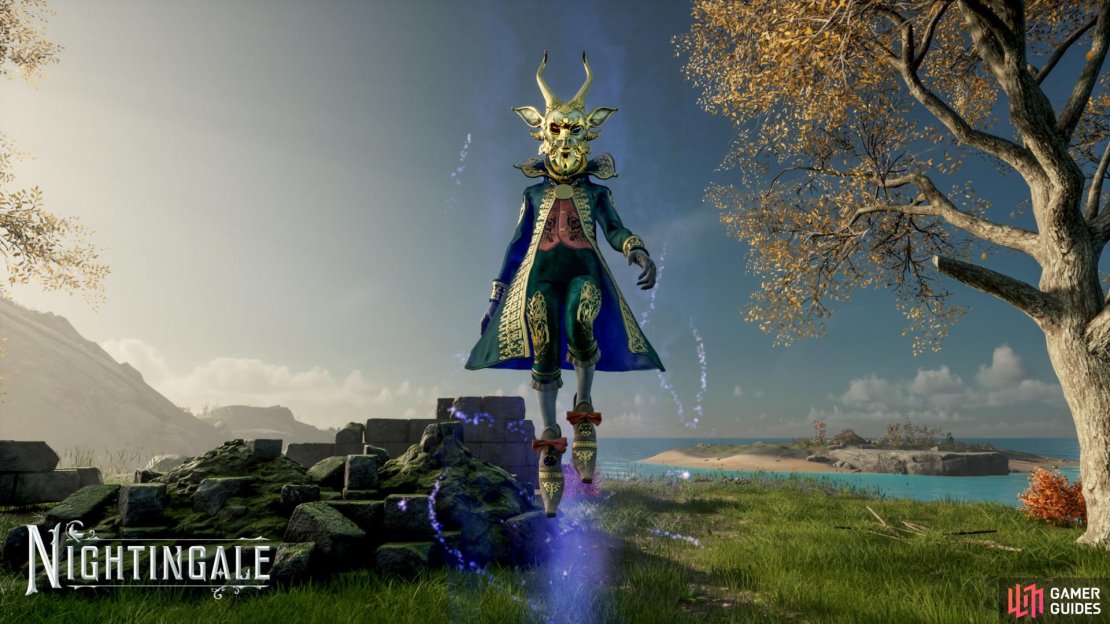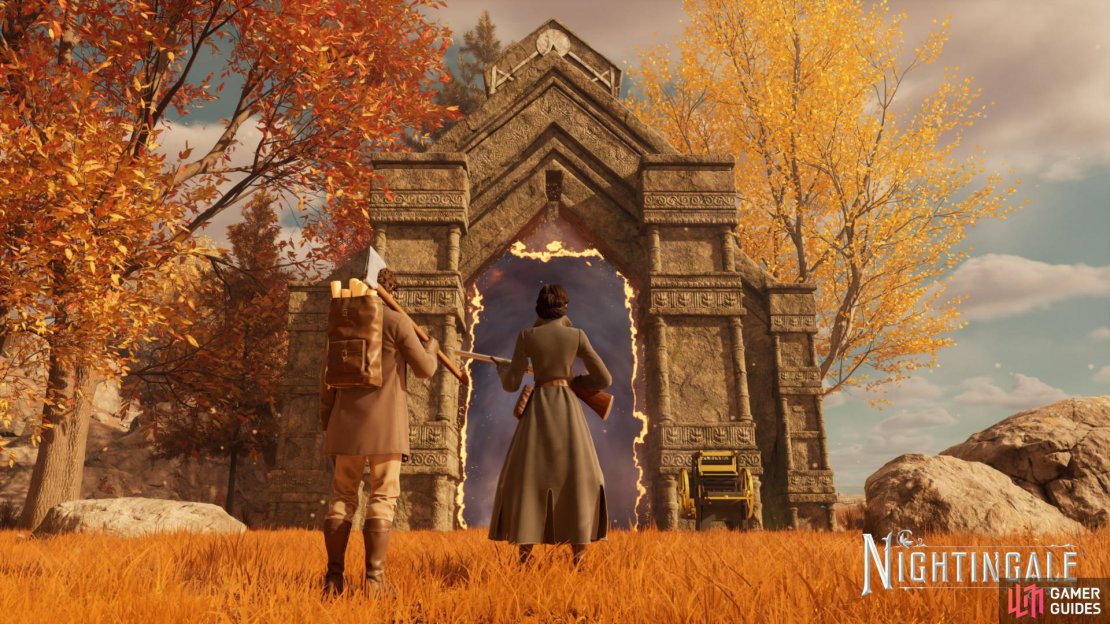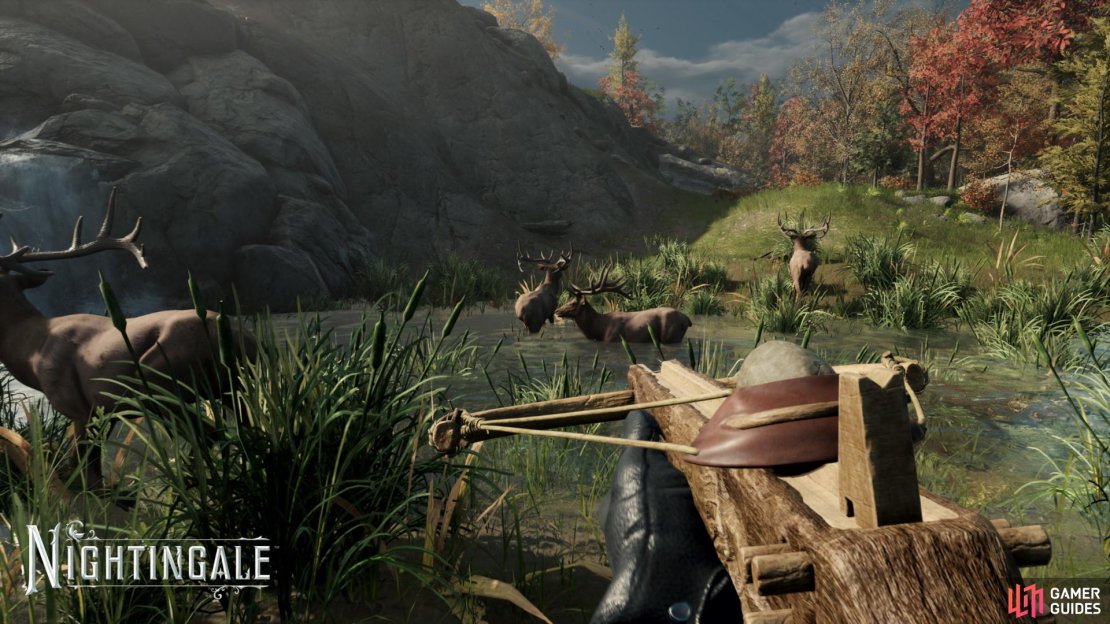
Pros
- Interesting & unique take on crafting
- Fun endgame loops and activities
- Minor Card mechanic adds evolution to maps
- Attractive & interesting visual style
Cons
- Realm exploring currently lacks varied objectives
You wake in a cold, stone room. The sound of distant screams fills the atmosphere, with a dull gloom hanging over your world. Is this Victorian England, or are you somewhere else? You’re not quite sure. Regardless, you press forward, only to be greeted by a weird magical man who appears and tells you to get going right now… or else. So you go. In front of you is a portal, ready to send you into another realm. All the while, local red-eyed creatures come forth from pale clouds to threaten you. Yeah, this could still be England we are talking about here. Regardless, with no other choice, you go through the portal, and enter new and mystical lands.
With one’s foot through the door, this magical creature reveals itself as a Fae called Puck. After some pleasant greetings, the mystical man sends you through a few different worlds, teaching you the basics of survival building and understanding the basics of the Fae Wilds you’ve entered. From there, you are sent to a world of your choosing and begin to make your way through the realms to create your new life.
This is the setup for Nightingale, the new Survival game from studio Inflexion. You’ve probably heard of this title already, with its prominent feature, “Realms”, sending players through portals in pursuit of new resources and exploratory needs. But while this is the prominent feature of the new adventure, our short hands-on with this curious release reveals a few more tricks up this Fae’s sleeve.
Puck is your Fae guide through the realms, offering quests and a hint or two along the way. (Image via Inflexion)
Visuals
The first talking point is the visuals, as we wanted to make a special note that Nightingale‘s graphics are quite charming. Sure, they are not Quadruple-A quality, but the atmosphere is intriguing and attractive. There is also great, classy drip on display - with a wardrobe of stylish clothing available through purchase, research, and recipe. Add in the various building styles you unlock - including traditional Viking, Tudor, and Japanese styles - and you have a varied range of visual styles to choose from. In some regard, you can’t help but get a New World flashback… Hey, you can’t say the aesthetic of New World was a bad one.
The nice thing about this distinct style is that it’s a theme not often touched in fantasy gaming. The closest we got was the outfitting styles in Hogwarts Legacy. It is a welcome aesthetic that more people can learn to appreciate, rather than the over-saturated punk or Viking styles that have dominated the genre as of late.
Realm Cards
The big ticket at this Victorian carnivàle is the “Realm Card” system. At first glance, it feels like Inflexion has created a mechanic where you can have a countless number of different worlds to explore. And for the most part - thanks to Nightingale’s Procedurally-Generated nature - you do. You essentially find portals (or create your own) at various points in the game, and then you place a “Biome” or “Major” card in order to generate levels. Biome Cards represent the types of flora and fauna you experience, alongside temperature, weather conditions, and terrain types. Meanwhile, Major Cards are the cards that affect the POI and the strength of the threats you can encounter in the region. There are about seven different types of Majors at the time of writing, which really gives you about 21 possible distinct world combos for you to explore.
Realm Cards are the main feature of Nightingale. We got to test opening vicarious realms and powers in the Nightingale Preview. (Image via Inflexion)
It is early days, of course, but after a few different realm creations, we began to notice a lack of variety. The higher the difficulty of the map, the better tiered resources you receive. And while the desire to roll higher remains, the maps all tend to have the same objectives: A Fae Tower here, some puzzles there, a few PvE battles, some wildlife that might kick off, etc. Don’t get me wrong, it’s perfectly engaging gameplay, but hopefully the activities encountered during the adventure will be expanded throughout Nightingale’s Early Access period.
The real treat lies in the “Minor Card” system. These cards are essential game rule modifiers, granting you bonuses and cons, or reshaping gameplay elements - allowing the player to tweak the rules of the realm. Players can tailor each world to their crafting, gathering, or combat needs. Essentially, those cards are there to give you some more flavor for funsies, or to help expand the benefits of why you’re creating a world in the first place.
Crafting
While the Realm Cards system is the most documented and most high-profile of Nightingale‘s features, Inflexion has also included some interesting new twists on the survival-crafting genre. Crafting in Nightingale is incredibly in-depth, and it’s here where the nerd in me got excited.
Most survival crafting games use a basic recipe list. Get the wood, make the stick type thing. But in Nightingale the game keeps recipes a bit more open with the basic materials you want to use. Let’s say you want to make a gun, and you need to make the parts for the gun. Let us say that one part of a gun requires an Ingot before you can make it. Well, that Ingot can be made from a variety of materials. Perhaps you want to use Tin, Magnesium, or Glimmershards ore to make that Ingot? It doesn’t really matter which you choose - they all work - but for those of you out there who want to specialize your playstyle, this is where Nightingale’s craft system gets interesting.
You’ll be crafting a lot of rudimentary tools, all the way to firearms and fancy weaponry - depending on the types of materials you use. (Image via Inflexion)
Essentially, each crafting ingredient has its own stat weight attached to it. Using a specific raw material might well grant you a higher critical chance, another might be more durable, while another may offer bonuses to ice or fire damage. These are all important stats to consider when building an arsenal. Should you focus on more durable items for better base defenses, or should you spend fewer resources on repairing your gear? Perhaps you have some Incendiary ammo for a shotgun, well, you can now build said gun using specific fire damage materials, honing that particular play style.
Of course, this is just one such example, and there are many other instances you may want to consider the min-maxing of the items and weapons that you craft. This focus on the synergy of crafting and playstyle was a nice surprise for us and is something that we think everyone should be aware of as they prepare and ally builds with their friends.
End Game
As part of the Nightingale preview event, we were also able to partake in a multiplayer session with the devs. Little did we know the devs would also be introducing us to some end-game systems beforehand.
Players will have the chance to choose from a number of end-game activities. Perhaps you want to explore massive, higher-end dungeons. Or maybe you want to visit the end-game player hub (“The Vault”) where players can gather for co-op adventures. Consider it Nightingale‘s variant on The Tower in Destiny, or the Plains of Eidolon in Warframe - Gather a group of like-minded explorer(s), battle through instanced content, complete challenges, beat bosses, and earn Essence to spend on new parts, resources, and base upgrades. We got a little taster of the Vault, and it was a fun experience shooting bosses and doing puzzles together and it’s interesting to see Nightingale transition from a survival/crafting title to something more akin to a dungeon-crawling experience.
Apex Hunts are one of the few end-game tasks we tested. You can do these to earn high-end materials via myriad challenges. (Image via Inflexion)
Another end-game feature we checked out is “Apex Creatures”. This feature allows players, alone or with mates (and ideally with mates), to embark on a hunt for special, mobile world bosses. Once you track one of these behemoths down, a world boss battle begins. Each of these Apex Creatures has its own tricky array of attacks to be mindful of, presenting the party with a meaty challenge. Should the team survive, then its members can fight over the resources skinned from the boss’s carcass - which will make for some nice gear and fashion. So, there’s some definite drama and ninja-looting antics to come - we’re sure of it.
From our initial time spent with Nightingale, Inflexion looks to be crafting (pun fully intended) a contender for one of the more unique survival games on the market. Additionally, we can likely expect many of these features to evolve over the year, further expanding this strange and intriguing universe. Even at this early stage, Nightingale is a promising survival game worth a blip on any adventurer’s radar.
Nightingale launches in Early Access February 20. Inflexion will work alongside the community over the coming months with an eye to release in late 2024 - early 2025.
[These impressions are based on a pre-release build of the game played at a preview event.]
A Faebulous Introduction
Inflexion looks to be crafting (pun fully intended) a contender for one of the more unique survival games on the market. Even at this early stage, Nightingale is a survival game worth a spot on any adventurer’s radar.
Gameplay:
Sound:
Graphics:
Story:
Value Rating:






No Comments